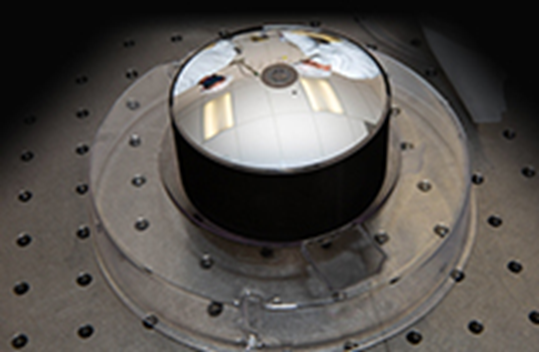Monolithic telescopes fabricate a reflective telescope into a single silica substrate. This approach provides exceptional mechanical stability because the relative position of the mirrors is permanently polished into a monolithic substrate and is inherently temperature insensitive due to the low CTE of fused silica (0.5 ppm/K). Once fabricated, monolithic telescopes can be taken for granted because the mirrors will always be aligned, even after subject to extreme force like during launch into space. There is a need to scale such telescope designs to larger apertures but not to incur the weight penalty of the conventional design.
Aeroptics are a proposed new class of monolithic optical system in aerogel fabricated by molding around a master mandrel. This approach combines the intrinsic stability of proven monolithic telescopes, with the ultralow density of silica aerogels. In Aeroptics, the monolith is hollow with an aerogel substrate providing a supporting structure. Theoretically, Aeroptics could enable 1-m aperture space-based telescopes with a mass of just 15kg, and mass that scales with aperture diameter cubed.
- All the stability advantages of a monolithic optic without the weight or optical absorption.
- Reduces weight at a 1m scale by 2 – 3 orders of magnitude.
- Compatible with space deployments and operations.
- Can be used in any application requiring fixed reflective optical elements.
- Space situational awareness and navigation
- Remote Sensing
Current stage of technology development: TRL 2-3
U.S. Patent Application No. 2023/0204936 Monolithic Optical Systems published 6/29/2023


